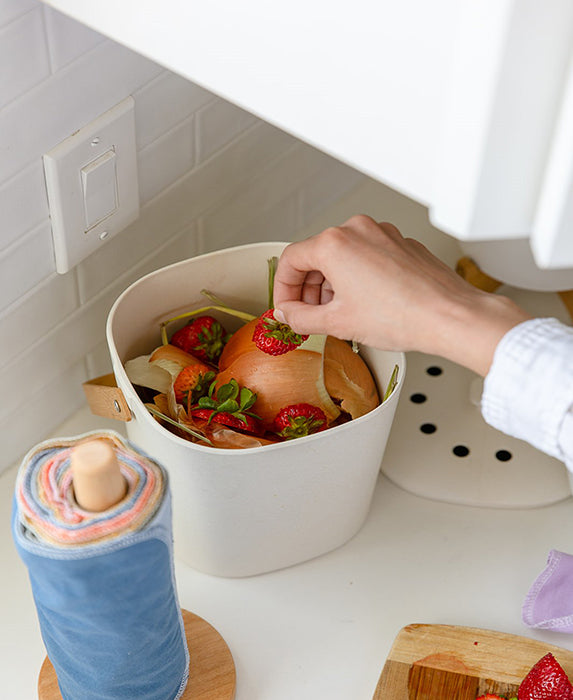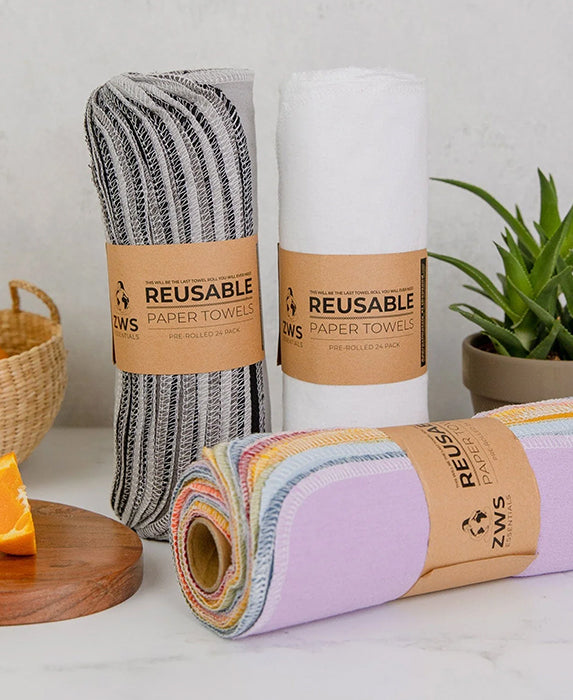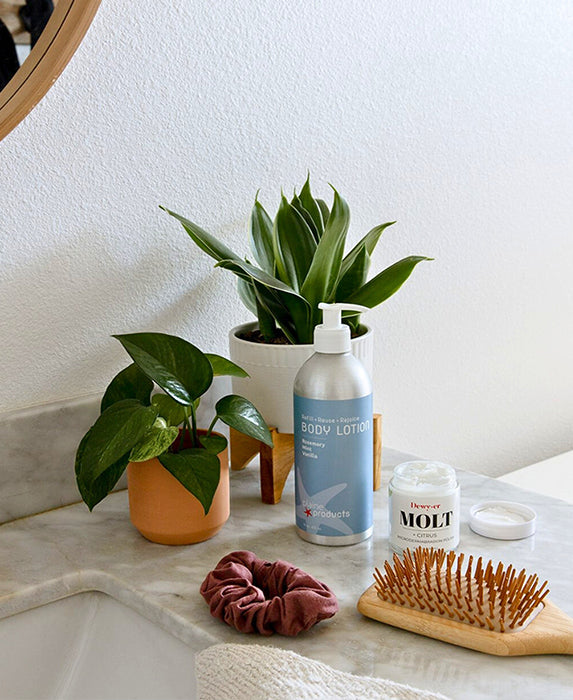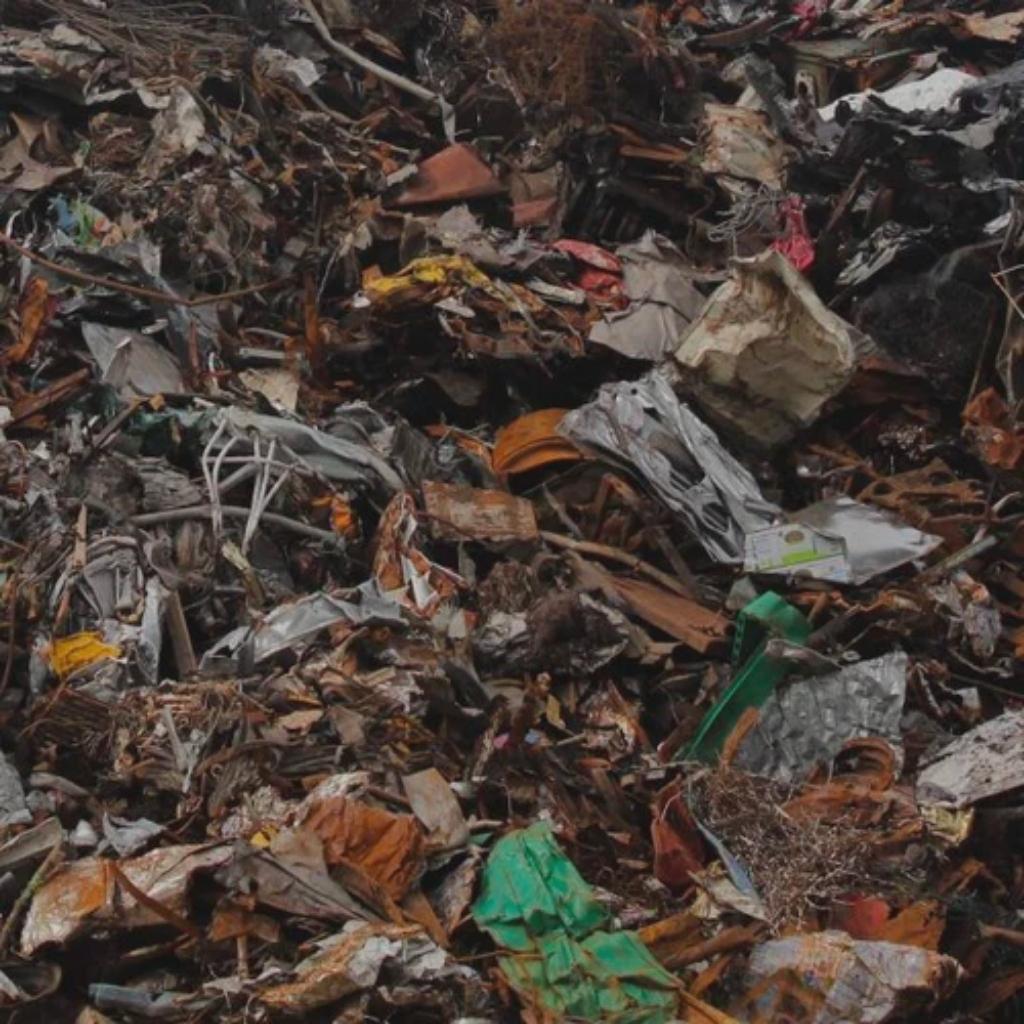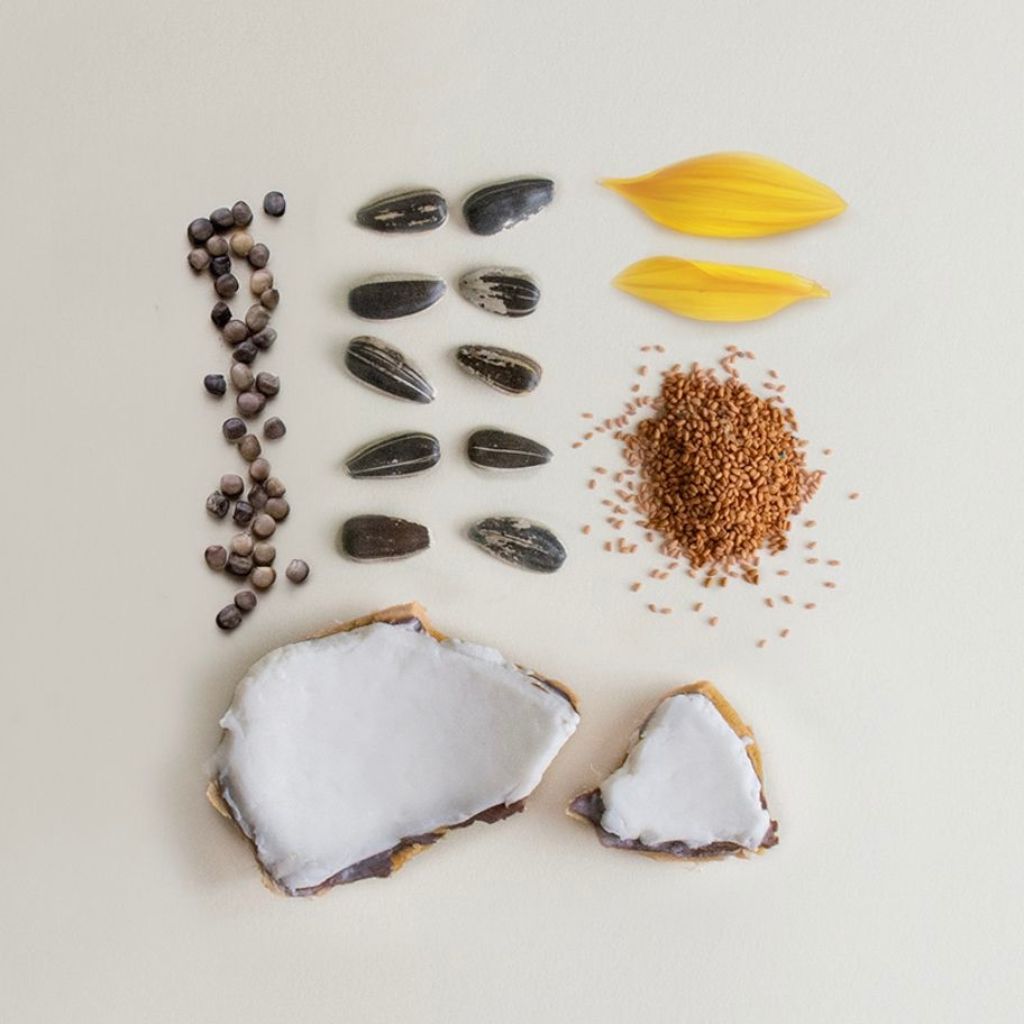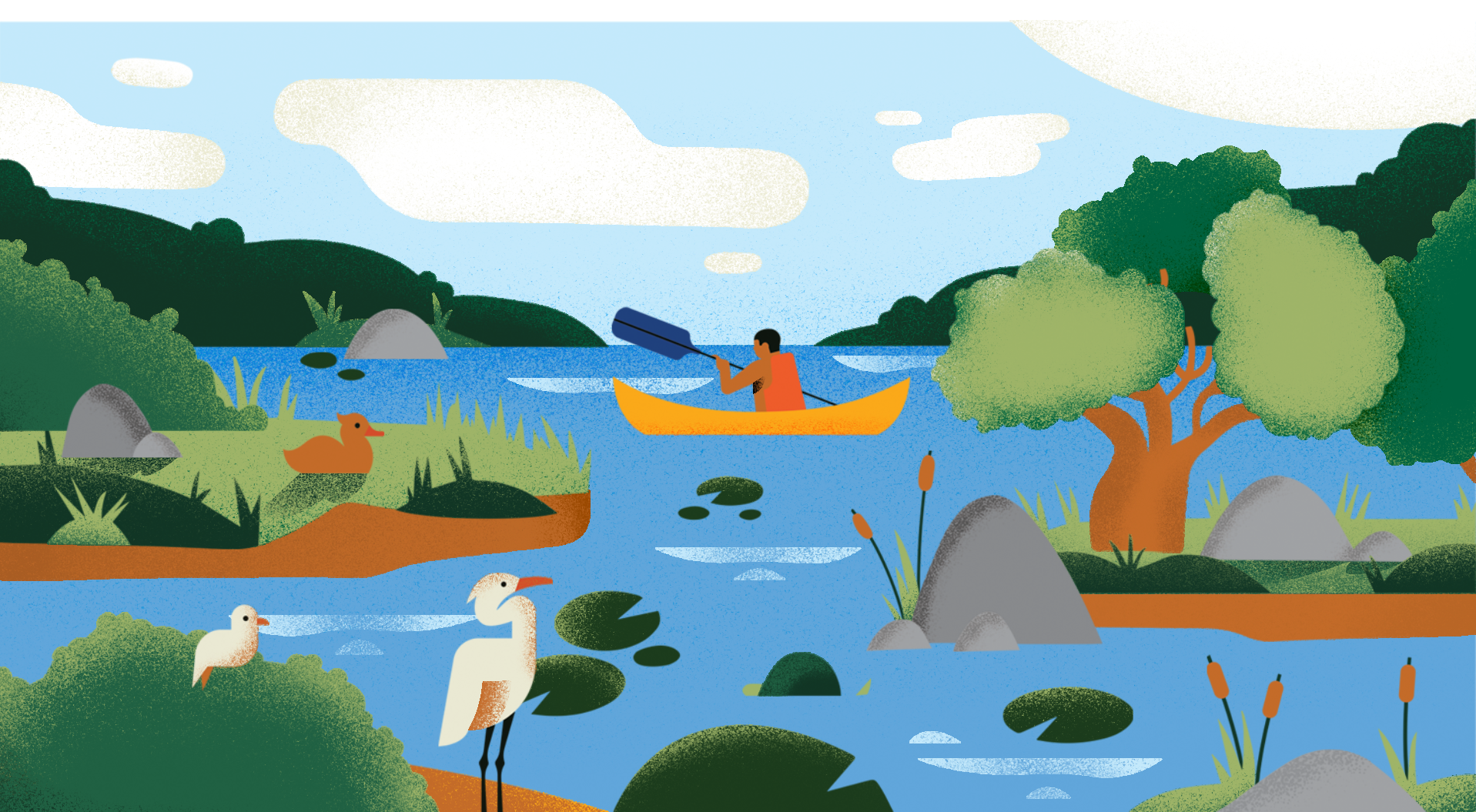Every year, Americans throw out 32 million tons of plastic trash–trash that won’t ever biodegrade or disappear, but instead will turn into teeny tiny “microplastics” that can cause a massive slew of environmental problems. While some people say plastic can break down after around 500 years, that still means your plastic fast food straw will stick around for the life of your great, great, great, great, great, great, great, (great!) grandchildren. In addition to the sheer volume of plastic pollution created, these plastics contain dangerous toxins like phthalates, BPAs, and flame retardants that can negatively impact your health, and the planet’s health too.
The negative impacts of plastics start from the very beginning. Almost all traditional plastics are made from non-renewable fossil fuels, such as oil and natural gas, which require intense amounts of energy and releases dangerous toxins when pulled from the earth.
Even at the end of their life, recycling these plastics can be a hazard for workers–and with the Chinese “Green Wall” in place, more and more American recycling centers are unable to sell or utilize any of their recycling, leading to massive buildups of plastic waste, and eventual dumping of recyclables into our landfills to make space. That’s why we suggest you start at the source–cutting out plastic (especially single-use plastics!) from your life one step at a time.
1. Rethink your grocery store trip…
Next time you visit your local grocery, spend a couple of minutes looking around at how much pure waste there is… but also look at how many ways you can reduce your own just by being aware!
Plastic might seem like it’s unavoidable when it comes to food, but hear us out. Looking for peanut butter? Scan the shelves for a glass jar, or bring your own container and try out the bulk PB section (it grinds the peanuts in front of you!) Always go for the pre-portioned salads? Take note of the ingredients and turn to package-free lettuce and bulk cranberries to set you up for multi-meal success! Things to avoid: plastic wrapped pre-cut fruit, pre-portioned snack pouches, and those styrofoam trays holding bacon or chicken (the store butcher will usually use less packaging if you go straight to them!)
Now for the produce bags. We’ve said it before, and we’ll say it again, but those flimsy plastic bags you use for your tomatoes are totally avoidable! While we sell these amazing bags made to keep lettuce crisp and almonds dry, you can always turn to using any old rucksack, or you can turn your old t-shirts into a homemade produce bag!
And, of course, let’s all just say “no” to single-use plastic at checkout. Grocery bags–we’re lookin’ at you! You only use them for about 10 minutes, but every plastic bag that’s been created will last at least another 500 years in the landfill. Even then, they just become microscopic bits that still become a part of the food chain. Keep our future food clean, and turn to reusable bags instead! Not only do they reduce the amount of plastic in your life, but they’re a lot less likely to end up ripping apart and dropping all your groceries, which we love. Let’s face it: do you really need more plastic bags stored under your sink?
2. Opt out of plastic microbeads…
Just because you don’t (usually) see microplastics, doesn’t mean they don’t exist. But–what is a microbead you ask? Plastic microbeads are itty bitty plastic pieces, usually two millimeters or less. They usually contain a cocktail of polyethylene (PE), polypropylene (PP), polethylene terephthalate (PET), polymethyl methacrylate (PMMA) or nylon (aka all plastic). For reasons we don’t quite grasp here at EarthHero, some companies have taken these dangerous microplastic particles and added them to nearly everything. Shampoos, conditioners, face washes, body washes, lotions, lip glosses, nail polishes, toothpastes, and even anti-aging creams and makeups nowadays contain thousands of microbeads that will *never* biodegrade. Yuck.
Part of the issue is that the very same products that contain these microplastics are also those that come in contact with water the most–like when you hop in the ocean after applying sunscreen, or rinse out your shampoo in the shower. Most wastewater treatment plants are unable to filter out these microscopic plastics, leaving them to build up in our oceans, lakes, and waterways. From there, fish and other marine animals can consume the microplastic pieces, mistaking them for edible fish eggs or plankton. Once those plastic pieces get inside their bodies, the dangerous toxins are absorbed into their tissues–which poses a huge problem if humans later harvest that fish for consumption. This is because microplastics can absorb toxic pollutants such as flame retardants and pesticides, which become “bio-accumulated”, as they get passed up the food chain. Put simply: if a fish consumes a piece of plastic, it might have .5% toxin level. But if a larger fish comes and consumes the fish that already had a toxin level of .5%, the larger fish now bio-accumulates the chemicals, and could have a toxin level of nearly ten times that original amount, or 5%. Bio-accumulation also occurs in humans, so by consuming fish that contains high concentrations of microplastics, we’re setting ourselves up for some crazy chemicals in our bodies.
But, how do you know if microplastics are in your products, and how can you avoid them entirely? Luckily in the USA, the FDA requires products with microbeads in them to have their full ingredients listed. Start by checking the products you already have for these ingredients: polyethylene (PE), polypropylene (PP), polyethylene terephthalate (PET), and polymethyl methacrylate (PMMA)–these are all indicators you’ve been tricked into using plastic microbeads!
In 2015, the USA pushed for federal legislation to ban microbeads, and succeeded–setting the stage for other countries worldwide to create similar bans. Despite this ban, there’s still a lot of products out on our planet with microbeads in it, so we suggest you always double check for plastic ingredients, and shop with certified organic companies whenever possible. We’ve broken down 4 of our favorite microbead-free brands here!
3. Package your food like a pro…
According to the Food and Agriculture Organization of the United Nations, roughly ⅓ of food created for humans to consume is lost or wasted globally–which amounts to 1.3 billion tons each year! In order to reduce this insane amount of food waste, various forms of food storage have popped up, from plastic seran wraps to resealable plastic baggies… but these single-use plastics can be even worse than the food waste they’re trying to prevent.
Simply changing the way you store leftovers, meal prep, and pack school lunches can have a massive impact on the amount of plastic waste your home creates. Tired of restaurants giving you non-recyclable styrofoam tupperwares with your leftovers? Bring your own toxin-free stainless steel container instead. Plastic-y seran wrap getting stuck in a useless ball? Swap it out with reusable (up to a year) beeswax wrap!
While avoiding single-use food packaging outside of the grocery store can seem like a hassle, the first step is simple: put your reusable containers in your car/purse/bike bag/spaceship/whatever takes you from point A to point B. That way, when you’re eating out and about, all you have to do is bring it in with you! When you’re at home, keep your reusable containers clean, organized, and ready-to-go–so if you’re running out of the house you can toss last night’s leftovers in a plastic-free container. By simply planning ahead you can stop hundreds of thousands of pounds of food-storage pollution from heading to our landfills!
4. Refuse single-use…
If you’re a fan of following zero-wasters, you might be hit with single-use plastic facts constantly, like the always shocking “500 million plastic straws are used each day.” But how can we change these single-use statistics, before it’s too late? Refusing single-use plastics is one of the easiest, and most impactful, things you can do every single day. From bringing your own water bottle on-the-go, to saying no to plastic samples at the store, and of course bringing your own reusable straw, there’s no shortage of ways to ditch single-use plastics.
Check out our top 7 products to help you go from single-use to reusables here!
5. Search for plastic in your clothing…
We don’t want to alarm you, but there might be plastic touching you… right… this… moment! That’s right, it could be in your clothes! Synthetic fabrics like polyester, though they offer a unique alternative to growing cotton, contain non-biodegradable microplastics that are quite similar to those found in personal care. With every single wash in the washing machine hundreds of thousands of these little microfibers go down the drain, and due to their size, go past the filters and straight to our waterways and oceans. Much like the story of personal care microbeads, these polyester pieces can become consumed by animals, and can be potentially consumed by us–essentially meaning we’re eating our own pollution.
According to a study by the IUCN, roughly 15%-31% of marine plastic pollution comes from products commonly found in the home, instead of from larger plastic items that break down slowly over time. Additionally, they calculate that 35% of that above microplastic pollution comes from synthetic textiles–with hundreds of pounds of microplastics funneling into our oceans each week, globally. This number is so shocking, it can make you want to never buy clothes again! Trust us, keep your clothes on… just shop microplastic-free with ethical companies that use natural materials like hemp or organic cotton!
6. As a last resort, switch to recycled content, biodegradable or plant-based “plastics”…
Do you know what happens to your used plastic garbage bags after you use them? Or the thin seran wrap film that keeps your produce fresh? What about those tricky plastic products labeled with the recycling symbol “#7 Other” (what does that even mean!)?
Just because something is plastic, doesn’t mean it can be recycled–in fact, most plastics films end up in our landfills, where they will stay for centuries without truly degrading or composting. And if they do degrade, we learned above that they can degrade into dangerous microplastics that can travel through waterways, and into the bellies and habitats of various animals.
Don’t panic: there’s tons of awesome companies out there finding innovative ways to make things that look, feel, and act like plastic–without all the fossil fuels, chemicals, and health-disrupting additives that classic plastics contain. Because the truth is, for some things, we haven’t found a better way to do it for certain situations (doggy poo bags, we’re looking at you!) without giving up something important. From biodegradable trash bags made from plant resins, to plant-based toothbrush bristles, and even non-toxic children’s building blocks made from sugarcane resin, “bioplastics” are sweeping the eco-industry. Our final verdict? Compostable and biodegradable bioplastics are awesome when they’re produced the right way… but we always recommend you look for a plastic-free or reusable option first before making the switch.
We include recycled content plastic here because we think it’s a step in the right direction towards a circular economy and away from a single-use plastic system. There’s tons of plastic on our planet that we’re going to need to find something to do with… so recycling and upcycling it into new, usable products can add more value to its (often short) lifespan!
7. De-plastic your personal hygiene…
Did you know that menstruating Americans use 7 billion single-use plastic tampons and 12 billion pads every year? From raw materials to production to packaging, these necessary hygiene and care products create a huge environmental impact–polluting our landfills, waterways, and even our bodies. Our motto is: if you wouldn’t want to put it in a landfill, you definitely shouldn’t be putting it in your body.
There’s three ways most people discard of their plastic tampons–in the trash, recycling (aka the trash–you can’t recycle those), or the toilet (aka also the trash). Out of all of these options, flushing is by far the worst. In 2009 alone, The Ocean Conservancy’s International Coastal Cleanup Project found 20,000 tampon applicators out of the 4 million pieces of plastic waste they collected. These 20,000 applicators will take 25 years or more to break down once they reach the ocean, that is, if they aren’t eaten by marine life who think they’re a tasty snack! Beyond the environmental impacts, flushing your tampon itself can break your plumbing, since cotton can grow to over 15x its original size in water, and take at least 6 months to biodegrade. So, even if the sustainable swaps we suggest aren’t for you–whatever you do, do not flush it!
When it comes to recycling tampon applicators, what you’re really doing is just adding another step before it ends up in the trash. Most recycling facilities can’t recognize and sort pieces of plastic the size of tampon applicators, so they end up either contaminating other recycled materials, or headed to the landfill anyways. So, if you’re still using traditional plastic tampons, save the folks at your recycling some time and energy by simply throwing that applicator away!
Beyond the mess of pollution and waste that traditional personal care can create, there’s also a number of serious health impacts correlated with most tampons. Those perfumed and scented tampons aren’t actually infused with rainbows, flowers, and pixie dust–but rather dangerous chemicals that shouldn’t be in any product, much less one that goes there. When you use scented tampons, you’re actually killing the beneficial bacteria down there, allowing bad bacteria to overgrow and cause serious issues like bacterial vaginosis and toxic shock syndrome (ew!) Your time of the month is how your body cleans itself, so let it do its natural thing!
Now that we’ve talked about how not to handle your period, let’s dive into all the amazing, innovative ways you can celebrate your body, and the planet during this time of the month. Whether your jam is compostable tampons, non-applicator tampons, a DivaCup, plastic-free cloth or cotton pads, or even a specially designed sea sponge, by not purchasing plastic packaged tampons you’re reducing the 300 pounds of feminine hygiene products that person can create in a lifetime!
This blog was originally published on July 29, 2018 and was most recently updated on November 23, 2022.

